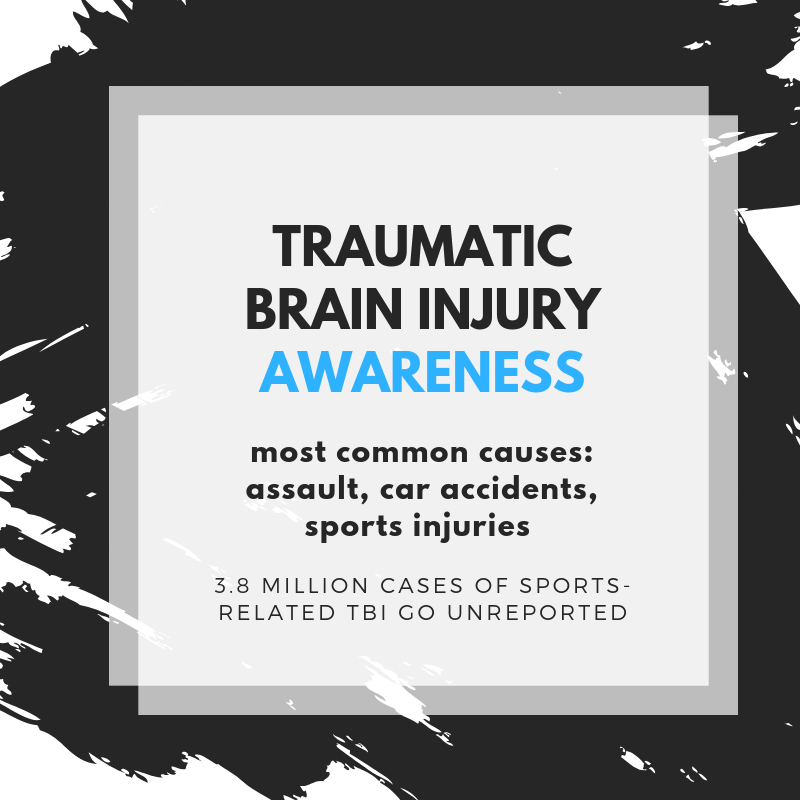
Traumatic Brain Injury Awareness
Nearly 2.8 million Americans are admitted to the hospital for traumatic brain injury (TBI) cases each year, and nearly 50,000 people die, yet many of us might not know what TBI is, or if we are at risk of it. Traumatic brain injuries are defined as a non-degenerative, non-congenital blow to the head by some force. To classify as a traumatic brain injury, you have to sustain a blow to the head, or receive a penetrating head injury that affects the regular functioning of the brain. What we often call concussions are classified medically as mild TBIs, and repeated TBIs can result in CTE ( Chronic Traumatic Encephalopathy). CTE is often diagnosed in athletes who have experienced repeated brain injuries or concussions; it is a neurodegenerative brain disease, like Alzheimer’s. Despite what many think, losing consciousness is not necessary for it to be classified as a serious brain injury.
The Problem
From 2007 to 2013, TBI-related visits increased by almost 50% and an estimated, 3.8 million people suffering from sports-related TBI go undiagnosed. This increase could be due to a variety of reasons, mainly increased awareness among people who participate in high-contact
sports and among health-care providers leading to better diagnoses. Increased rates of TBI can increase the likelihood of someone developing CTE ( Chronic Traumatic Encephalopathy) or Parkinson’s disease later in life.
Risk Factors by Age Group
Those at the highest risk for TBI are within three age groups: children (0-4 years), teenagers (15-19 years), and the elderly (65+ years). Among TBI related deaths, those who were above 75 years of age are the most affected. According to the CDC, the cause of TBI related deaths varies by the age group: For 0-4 years of age, assault were the most common cause; from ages 5-24 years, car accidents were most common cause of TBI-related death. Meanwhile, those from 25-64 years, intentional self-harm is the leading cause of death; while for those older than
65, falls were the leading cause of TBI and subsequent death. Given these causes of death and injury, it has been found that using a seat belt in the car would help the most in preventing TBI.
TBI and Injury Classifications
There are several kinds of injuries that can be sustained in a TBI incident besides just a concussion; the two main types are focal and diffuse injuries. In a focal injury, only one area of the brain is affected, while in a diffuse injury the damage covers several areas of the brain. If the brain damage is described as primary, then the damage’s effects will be immediate, and if the damage is secondary, then the deleterious effects of the damage will occur gradually over a longer period of time. With TBI, damage is most commonly sustained to the frontal lobe which can impair thinking and emotional functioning.
If you are struggling with your mental health, or you know someone who might be struggling, please feel free to contact the professional team at Lifeline Connections for help!
Getting yourself help, whether it is through self-help or by reaching out to professionals is an important part of recognizing that you are struggling; it is also a good step forward in getting the help you need. You can visit Lifelineconnections.org or call 360.397.8246 for more information.
Sources: https://www.cdc.gov/traumaticbraininjury/get_the_facts.html
